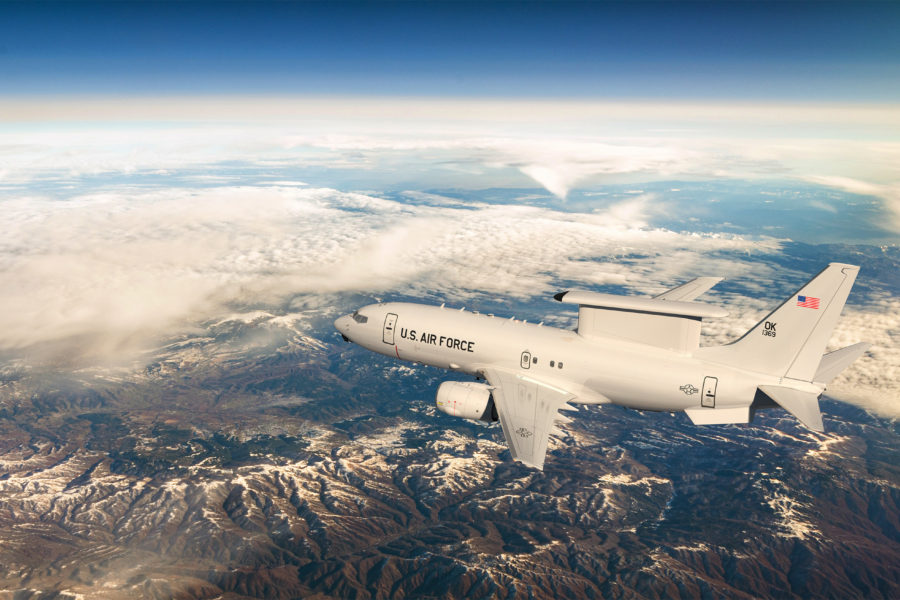The Air Force Scientific Advisory Board aims to complete four studies in 2023, with two focused on a couple of Secretary Frank Kendall’s operational imperatives.
The scientific advisors provide independent advice on key science and technology needs, and this year will focus on:
- Air and Surface Moving Target Indication
- Scalable Approaches to Resilient Air Operations
- Developmental and Operational Testing
- Assessing Advanced Aerospace Mobility Concepts
Initial findings are due to Kendall in July, with a final report to be published in December, according to an Air Force release.
Moving Target Indication
Tracking moving targets and delivering that data to weapon systems on the move is among the most pressing of Kendall’s seven operational imperatives.
The Air Force’s early warning and battle management fleets are aging. The E-3 airborne warning and control system (AWACS) and E-8 joint surveillance target attack radar system (JSTARS) aircraft will be retired in the coming years, while the new E-7A Wedgetail isn’t slated to come online until 2027. While space-based surveillance, intelligence, and reconnaissance technology is available, getting the targeting data from sensors to shooters still far from a seamless process.
However, the question of how much the department can and should rely on satellites for moving target engagement remains open-ended—in its release, the Scientific Advisory Board noted that “tracking moving targets from Low Earth Orbit (LEO) requires near-continuous target coverage and hence highly proliferated constellations [and] … a Space-Based Radar (SBR) able to detect slowly moving targets must have a long antenna which tends to make satellite cost high.”
As costs drop, the release states, “the Department of the Air Force would benefit from an independent assessment of the feasibility of developing and deploying a system incorporating aircraft and satellites to provide surveillance and targeting of moving targets.”
In particular, the study will look at traditional and novel concepts for tracking moving targets, both in peacetime and in highly contested environments, and assess things like their ability to generate both the quality and quantity of data needed, the cost of developing new technologies and approaches, and the threats posed to them.
After that, the study will “propose science and technology investments needed in the near-, mid-, and far-term.”
The study panel will is led by Dr. David Whelan, the former chief technologist at Boeing Defense, Space & Security and now a professor of engineering at the University of California San Diego. The vice chair is Dr. Ryan Hersey, director of the Sensors and Electromagnetic Applications Laboratory at Georgia Tech.
Scalable Approaches to Resilient Air Operations
With Agile Combat Employment gaining traction in the Air Force as a means of distributing operations and quickly deploying small expeditionary teams of Airmen to different remote locations, Kendall has also emphasized the need for resilient basing.
But ACE presents numerous operational and logistical challenges, and the Scientific Advisory Board recommended a study of technologies that could help with base defense.
“Such approaches might include Directed Energy Weapons (DEWs), both lasers and High-Power Microwave (HPM) systems; runway independent aircraft technologies to increase the number of places to launch and recover aircraft; non-kinetic defense approaches … ; and low-cost kinetic interceptors fired from guns,” the release states.
The study will review how costly and effective such alternatives could be and what it would take to incorporate them into the Air Force’s ACE concept of operations, then propose science and technology investments.
Dr. Steve Warner of the Institute for Defense Analyses will chair the study, with Glenn Kuller of Lockheed Martin as his No. 2.
The Air Force Research Laboratory has studied directed energy weapons extensively in recent years, including some that could defend bases against unmanned aerial systems. And the Defense Advanced Research Projects Agency recently announced it is working on high-speed runway independent technologies with U.S. Special Operations Command.
Other Studies
A third study seeks to dig into the logistical challenges of operating in the vast IndoPACOM theater. Among the concepts the Air Force is investigating are blended-wing body (BWB) aircraft concepts and Rocket Cargo to distribute supplies more quickly and cost-effectively over great distances. The Scientific Advisory Board listed autonomous technologies and electric or hybrid aircraft as potentially useful “mobility approaches,” as well. Toward that end, a third panel is studying the effectiveness and survivability of those concepts.
A fourth area of study would address Air Force and Pentagon concerns about the speed of testing for new platforms. The scientific advisors studying whether digital engineering, modeling and simulation, and automated tests using artificial intelligence can further accelerate Air Force testing solutions.
